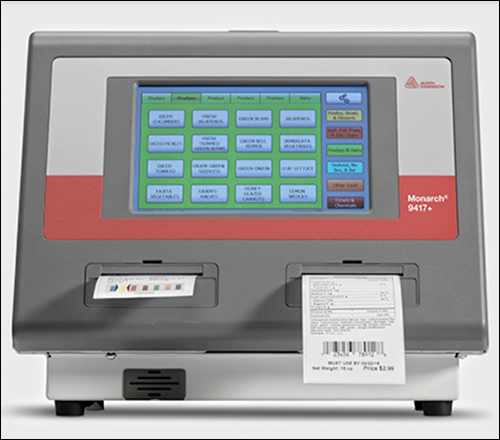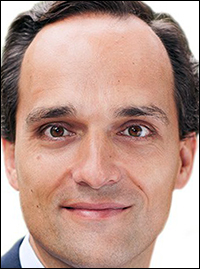Avery Dennison is helping ultrahigh-frequency (UHF) radio frequency identification technology to make deeper inroads into the retail market, with solutions and pilots intended to manage cosmetics and fresh foods. Several retailers have been piloting cosmetics as part of their RFID tracking solutions, and a chain restaurant is currently testing the technology as part of Avery Dennison’s Freshmarx Food Safety program. To further enable the use of RFID on food products, the technology company has developed a microwave-safe inlay that could be applied to food packaging without reacting adversely to microwaves, or to the heat caused by them.
Freshmarx is Avery Dennison’s suite of food-safety, compliance and efficiency solutions for stores and restaurants. It offers systems for printing labels that can be applied to products to provide greater inventory accuracy, as well as temperature sensing and cloud-based inventory management for safety authorities regarding food or other perishable products. Freshmarx products include the 9417+ printer for grab-and-go labeling, which lists ingredients, dates and nutrition information, and FreshMarx software with a touchscreen interface. The solution can also include Freshmarx temperature-tracking sensors, placed in cold-storage units to monitor conditions around products.
With RFID, the company reports, the tracking of food item safety becomes more automated. Avery Dennison’s customers in food and other perishable goods retail or distribution face growing financial pressure created by the high costs of labor and product waste, as well as consumer demands for transparency, says Ryan Yost, the general manager of Avery Dennison’s Printer Solutions Division. He cites the rising minimum wage for workers who receive, handle and count inventory of goods, as well as the management of expiration dates. When it comes to waste, inventory for perishable goods is often overstocked in order to prevent a shortage, which typically results in the expiration of a percentage of the product.
In the longer term, most food retailers are watching and planning to meet a consumer-driven trend in which customers can make purchases without waiting in line—such as the Amazon Go model. To accomplish this, stores will need to invest in technologies like RFID that can capture the identity of the product being selected for purchase, and then link that ID to the customer and his or her credit card or account.
“There is a role for RFID in all three challenges,” Yost says, regarding labor costs, waste and consumer trends. For instance, he adds, reading the tags of goods at the points of shipping and receiving with handheld readers has thus far proven, during the pilot, that it can reduce the amount of labor time employees would otherwise spend physically examining the products.
Freshmarx also provides alerts regarding any goods that may be nearing their expiration dates or have been stored at an unacceptable temperature. Workers can view that data at the time the tags are read, while managers can receive notifications prompting them to locate the products of concern and address the problems accordingly. However, the company notes, most RFID implementations in this market still follow a measured approach. The first step for food retailers is to track some packaged foods, along with the trays or cartons in which those goods are transported.
Right now, says Francisco Melo, Avery Dennison’s global RFID VP and general manager, stores are most commonly investigating how well they can capture product data by tagging goods at the tray or container level, rather than each individual item (for instance, tracking an entire tray of apples to a particular store and shelf, rather than each individual fruit). Most of those piloting or launching the technology, Melo adds, are using handheld RFID interrogators to capture read data.
The Freshmarx and RFID pilot is being undertaken by a quick service restaurant chain in a phased approach. The first phase consists of tracking RFID-tagged products at a distribution center and two restaurants, and the pilot will then extend to phase two, with 100 to 150 restaurants participating.
With the RFID-enabled Freshmarx solution, a passive UHF tag from Avery Dennison is placed on each carton or pallet of goods at the point of distribution. As the products are loaded onto trucks and then received at the restaurant, their tags are read in order to identify when each item was shipped and received. The collected data is linked to Freshmarx temperature sensor data inside the truck coolers, thereby confirming the environment to which they were exposed during transit. Other data stored with the sensor information includes product ingredients and safety requirements.
The expansion of beauty-based product continued throughout the past year at Avery Dennison as well, Melo reports. Beauty retailers are following what he calls the apparel playbook for employing RFID, by tracking their product inventory levels in store stock rooms and on show floors. The beauty market is following apparel, he explains, in part because it is uniquely complex. Products are small, often with metallic and fluid presence, making them more challenging for tagging. However, the value of accurate inventory data is especially important since the products are often high in value and challenging to count manually.
Last year, Melo says, three companies conducted pilots of RFID technology from Avery Dennison for the tracking of their beauty products, and several retailers have plans to conduct their own pilots or deployments. Many of the companies already have installations of RFID infrastructure for tracking apparel or other goods at their stores, he adds, so the expansion to tracking beauty products can be a seamless one.
Until recently, companies were challenged with few options for tags designed for the form factor of small containers of makeup or perfumes. However, Melo notes, Avery Dennison offers inlays designed for that application, and these have worked well during the pilots. For instance, the AD172u7 measures 22 millimeters by 12.5 millimeters (0.9 inch by 0.5 inch), while for long, narrow items, the AD-160u7 stretches 60 millimeters (2.4 inches) in length, but is only 4 millimeters (0.2 inch) in width. Another inlay, known as the AD-180u7, measures 26 millimeters (1 inch) in diameter and is shaped for caps and lids.
Avery Dennison says it is now working to address other tag hardware challenges for the food retailer market. With the increased interest in tagging food products, the company has been focused on designing a tag that is safe when placed in a microwave. It has developed the AD-250r6-P for the item-level tagging of chilled or frozen packaged foods. The UHF label delivers standard item-level tracking capability, the firm indicates, along with a high read rate performance and microwave safety.
One reason that some companies have not yet piloted RFID on food products could be a concern regarding microwaves, Melo speculates, due to safety problems resulting from consumers putting tagged packaging in a microwave oven. A standard UHF tag, with its antenna and metal chip, should not be placed inside such an appliance. However, Avery Dennison has released a microwave-safe tag leveraging a proprietary design to avoid arcing and excessive heating. The tag comes with an Impinj R6-P chip.




